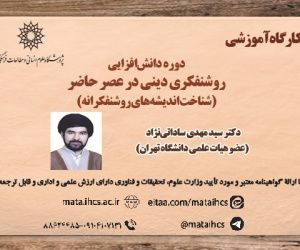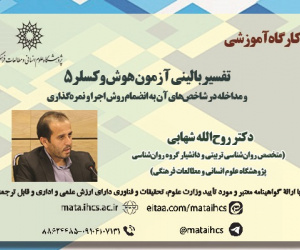بحران احزاب سیاسی و جایگاه حزب جمهوری اسلامی در انسجام نیروهای اسلام گرا (در آغاز انقلاب 1357) (مقاله علمی وزارت علوم)
درجه علمی: نشریه علمی (وزارت علوم)
آرشیو
چکیده
این پژوهش باهدف تبیین نقش و جایگاه حزب جمهوری اسلامی در ایجاد همبستگی و اتحاد میان نیروهای اسلام گرا و بحران احزاب سیاسی اوایل انقلاب سال 57 با رویکرد هانتینگتون؛ به فراگرد تحول حزب در چهار مرحله جناح گرایی، دوقطبی شدن، گسترش و نهادمندی می پردازد و مساله اصلی مقاله مذکور عبارتست از این که؛ حزب جمهوری اسلامی در ابتدای پیروزی انقلاب 57 از چه نقش و جایگاهی در انسجام بخشی به نیروهای اسلام گرا برخوردار بوده است؟ در این پژوهش تلاش شده تا با روش تحلیل محتوای توصیفی به این تحقیق پرداخته شود که حزب جمهوری اسلامی با رویکرد جناح گرایی بعد از انقلاب و حضور احزاب اسلامی در این حزب، شاهد ورود اعضای آن به کادر اجرایی– اداری و ساماندهی و انسجام نیروهای اسلام گرا در نظام تازه تأسیس جمهوری اسلامی ایران در ابتدای انقلاب بوده است که با توجه به بحران قدرت در احزاب سیاسی عملاً عرصه حضور جریان های غیراسلامی سیاسی رقیب در اوایل انقلاب (همچون جریان چپ و راست) تماماً محدود شد و منجربه انسجام نیروهای اسلام گرا در ساختار بوروکراتیک بعد از انقلاب 57 گردید.The Crisis of Political Parties and the Position of the Islamic Republic Party in the Integration of Islamist Forces (at the beginning of the revolution 1379)
This research aims to explain the role and position of the Islamic Republic Party in creating solidarity and unity among Islamist forces and the crisis of political parties at the beginning of the 1979 revolution. Using Huntington's approach, it examines the party's evolution in four stages: factionalism, bipolarization, expansion, and institutionalization. The main issue of the aforementioned article is: What role and position did the Islamic Republic Party have in uniting Islamist forces at the beginning of the 1979 revolution? In this study, an attempt has been made to use content analysis (descriptive) method to investigate how the Islamic Republic Party, with its factional approach after the revolution and the presence of Islamic parties within it, witnessed the entry of its members into the executive-administrative cadre and the organization and integration of Islamist forces in the newly established system of the Islamic Republic of Iran at the beginning of the revolution. Given the power crisis in political parties, the presence of competing non-Islamic political parties in the early days of the revolution (such as leftist and rightist currents) was practically completely limited, leading to the integration of Islamist forces into the bureaucratic structure after the 1979 revolution.







